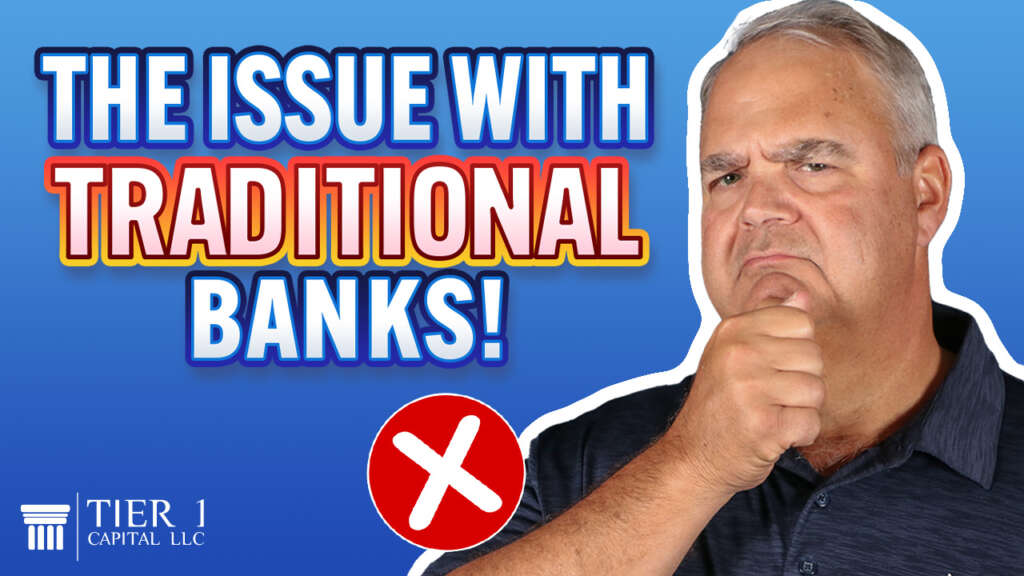
Since that whole fiasco with the Silicon Valley Bank, a lot of our clients have been calling us and saying, “Hey, is my money safe with a life insurance company?”
One day everything is fine. The next day you have nothing. One day you think your bank is safe and now you’re facing uncertainty. When it comes to saving in the bank, we’re certainly not depositing our money for high interest yield returns. We’re putting it there for safety, for security, for liquidity use and control.
However, when something happens like adjusted with SVB, our faith and trust in the banking system gets rocked. Silicon Valley Bank became insolvent because there was a run on the bank, meaning that a lot of depositors wanted to withdraw their money because they saw that the bank was unsafe. The problem is, not everybody got their money.
You see, in the old days when you wanted to do a run on the bank, you went to the bank, you asked the bank for money. They gave it to you. Or if there was none left, they would let you know. Nowadays, with online banking, we’re able to withdraw money and transfer it somewhere else without the bank even being open.
We’ve all seen those iconic pictures during the Great Depression of people standing in front of a bank waiting and hoping to be able to get their money before the bank ran out of money. Because of electronic banking, the ability to access your money should be quicker. However, when there’s a run on the bank, that liquidity disappears.
So you may be wondering what safeguards do the banks have in place to make sure that you’re able to access your money?
First and foremost, the bank needs to put money in reserve to guarantee that you could get your deposit. Do you have any idea how much the bank needs to put aside in reserve to make sure that you can get your money?
Well, the answer is somewhere close to $0.10 for every dollar. What that means is if you deposit a dollar in the bank, the bank only needs to put aside $0.10 to guarantee that you’ll get your dollar. Now, they’re banking on the fact that not everybody is going to want their money at the same time. And for the most part, that holds true, except when it doesn’t.
So what happens when it doesn’t? Well, that’s where FDIC comes in. FDIC stands for the Federal Deposit Insurance Corporation. One of the first things people ask when they’re putting money with an insurance company is, “Hey, is this FDIC insured?” And my response is, “No, thank God.” And then they look at me with a puzzled, look and say, “What are you talking about?”
You see, the reason banks need FDIC insurance is to guarantee that you’ll get your money, because if there’s a run on the bank, they know they don’t have enough money set aside to make sure you’ll get your money. So they have to offload that risk to a separate company, the FDIC. What the FDIC does is they charge banks a premium that they use to create the deposit insurance fund. It’s called the DIF. And in that deposit insurance fund comes premiums from all the banks, small, medium and large. And there should be enough money in there, hopefully, to make sure that everybody will get their money.
Here’s the problem. As of December 31st, 2022, the FDIC held $128.5 billion in the deposit insurance fund. But consider this, It was backing $22 trillion of assets. That’s like a penny and a half for every dollar of deposits. Is your money really safe?
So let’s transition over to the reserve requirements of an insurance company, specifically a life insurance company, whether it’s with an annuity or life insurance. Life insurance companies have the highest reserve requirements of any financial institution. That means they have a higher reserve requirement than banks and investment firms. And consequently, your money is safer with a life insurance company than any of those other financial institutions.
You got to realize the reason the banking industry pushed for FDIC insurance during the Great Depression, when 9000 banks failed, was because people lost faith and trust in the banking system. And that’s why FDIC was created.
So how does this translate? Well, let’s take a look at a poorly run insurance company, a poorly run life insurance company would have a dollar and $0.04 of assets for every dollar of liability that they own, meaning they could pay all of their claims and still have money left over, not like an investment where your money is at risk, or a bank where there’s only a fraction of your deposit actually held by the institution. We believe that life insurance companies are a much safer place to store and build and accumulate your wealth.
And as we just learned, it’s not how much money you make. It’s how much money you keep that really matters.
